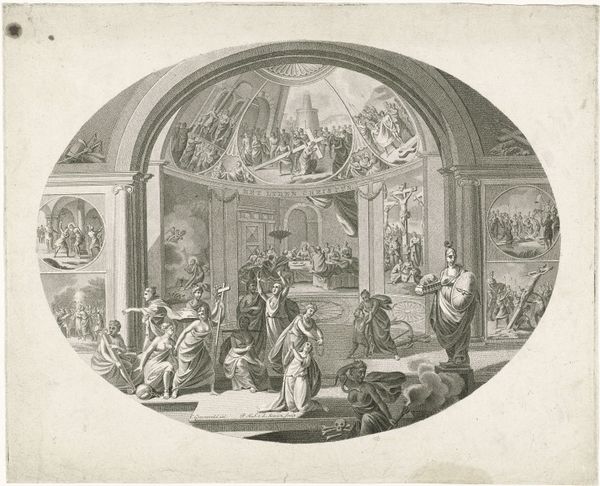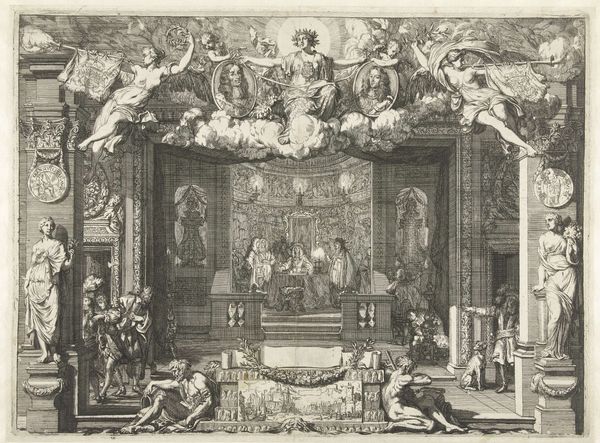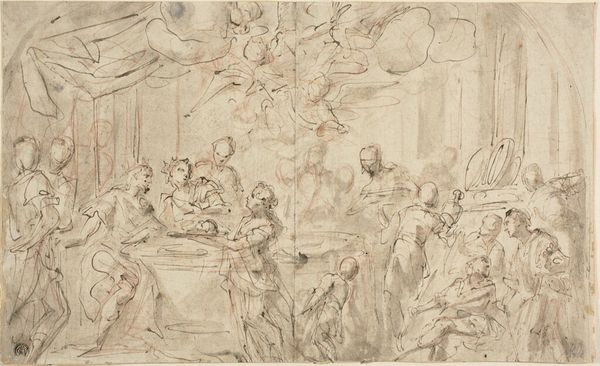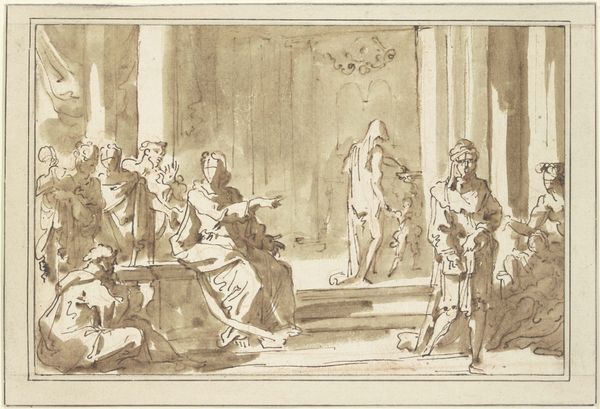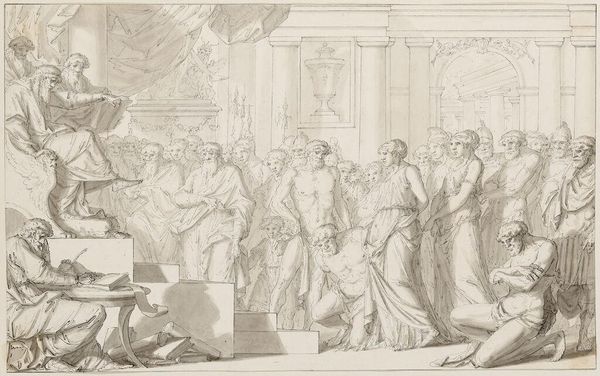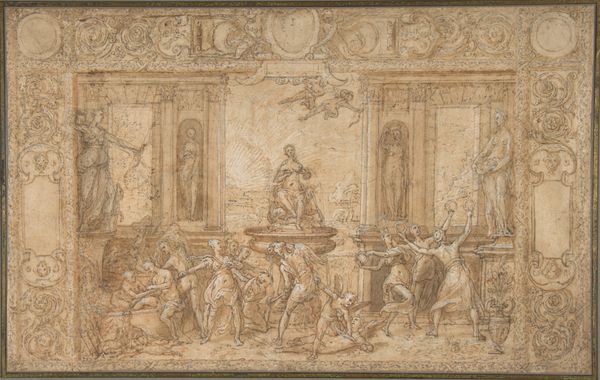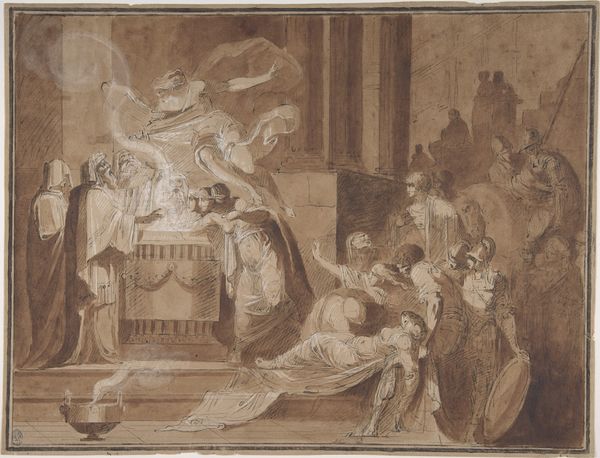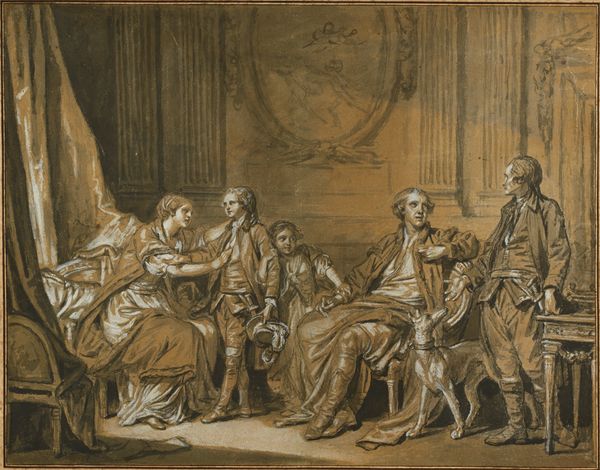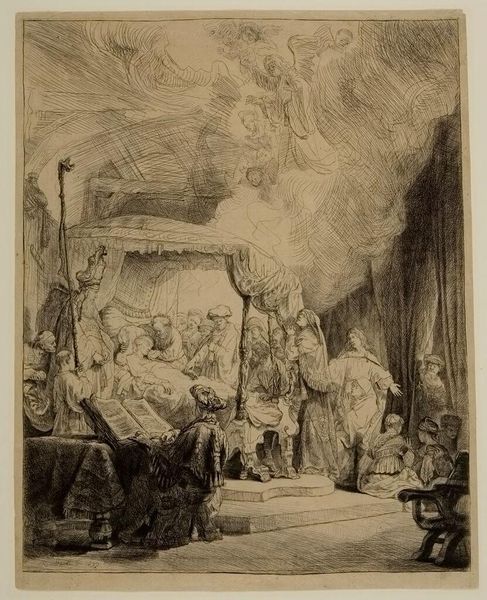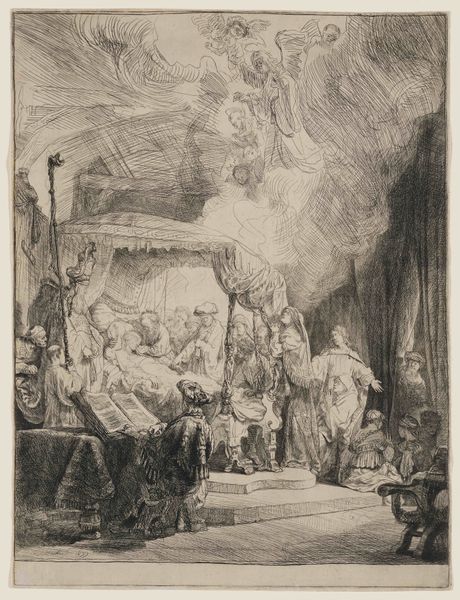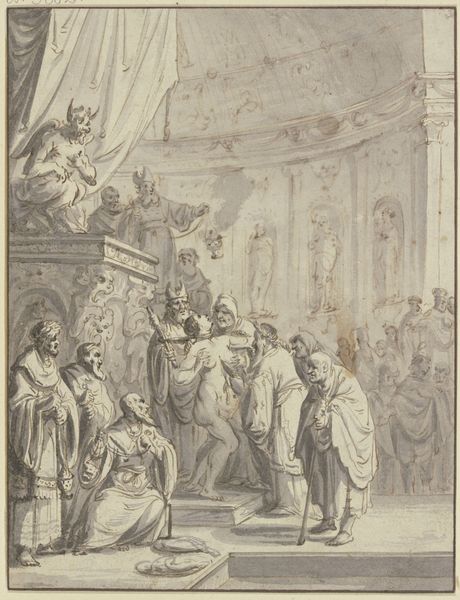
painting, oil-paint, textile, mural
#
baroque
#
painting
#
oil-paint
#
textile
#
holy-places
#
impressionist landscape
#
oil painting
#
painterly
#
genre-painting
#
history-painting
#
mural
#
realism
Copyright: Winston Churchill,Fair Use
Curator: This evocative artwork gives us a glimpse into Blenheim Palace with its celebrated Marlborough Tapestries. The artist has captured the grand scale of the room in painterly strokes, allowing us to examine history through an intimate lens. Editor: It feels… unfinished, almost like a study. But even with its looseness, you can sense the weight of history pressing down in that room, all that gilt and those figures on horseback looming. Curator: Precisely! The figures you see depicted aren't just decoration, they illustrate the Duke of Marlborough's victories. Note how the artist emphasizes this theme by painting the very room within which they're housed. Think of the message that sends – a layering of triumph upon triumph, solidified within this palace. The oil paint mimics the textile look of the mural! Editor: I'm interested in how the painting presents the tapestries almost as characters themselves within the larger composition of the room. They become part of a visual record that has socio-political connotations beyond just art objects hung on a wall. Curator: Absolutely! They represent not just battles won, but a continuity of power and legacy. The symbols inherent in those scenes - the horses, the commanding figures - speak volumes about the self-image of the aristocracy, the historical narratives that justify their position, and its impact across generations. This work captures that moment in time where image, symbol, and the ruling class coalesced into one narrative, preserved through paint and canvas. Editor: It prompts one to consider who it represents and the power that dictates that only a limited number of figures in the room - figures on horseback - become the cultural memory and iconography passed down through painting, history, and imagery of this scale and political undertones. Curator: An astute point. Art is so rarely created in a vacuum. The artist isn’t just recording what is there, but also contributing to that ongoing historical narrative and asking for its perception of how people understand and react to its power and importance. Editor: It’s been revealing to look at those threads of context that connect an interior and its objects, to appreciate those painterly decisions that influence an historical legacy, as well as challenge those accepted perceptions.
Comments
No comments
Be the first to comment and join the conversation on the ultimate creative platform.
